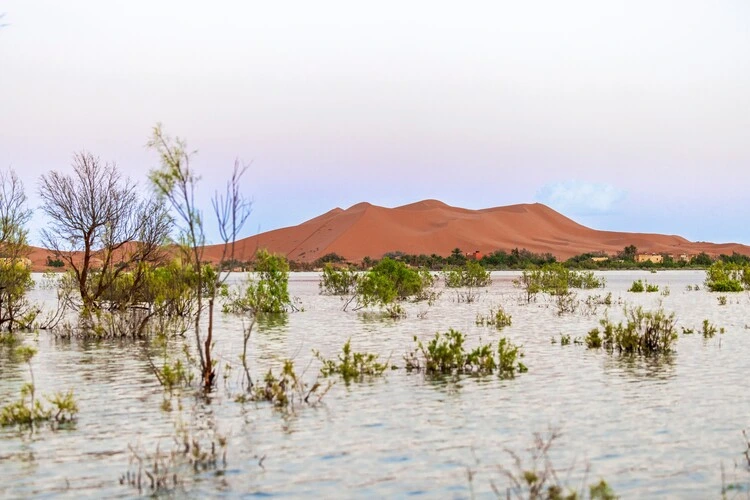Devastating Floods Increase Concerns About the Impact of Climate Change
- Leyla Hacioglu
- Nov 15, 2024
- 4 min read
Recent Disasters
In the last 2 weeks, between the 29th of October and the 9th of November, Eastern Spain was wrecked by flash floods. Heavy rainfall led to riverbanks overflowing late Tuesday and early Wednesday, and quickly escalated to flooding in the streets, with muddy water covering roads and entering buildings. The floods caught people unexpectedly and swept away everything in their path. Valencia was hit the hardest and the current death toll is over 215, with searches still proceeding for countless missing people. The tragedy is considered the worst flood-related disaster in Europe since 1967.
Unfortunately, the situation in Spain is just one of the many devastating flood-related natural disasters that have occurred in 2024. In early October 2024, Florida experienced Hurricane Milton, a category 5 tropical storm that wreaked havoc across the state. Originating from the Gulf of Mexico around October 4, the hurricane rapidly intensified with winds going from 90 to 180 mph in just 15 hours, which made Hurricane Milton one of the nine Atlantic hurricanes to reach winds above that threshold. Though it weakened by the time it hit land, the hurricane spawned 46 tornadoes between October 8-9, marking it as the biggest and third deadliest tornado outbreak in Florida in 70 years. The insured damage was estimated to be around 20-60 billion USD.
Even places that are known for their lack of rainfall have been hit by floods. In September 2024, the Sahara Desert, the largest hot desert on Earth, flooded for the first time in half a century. The unexpected rainfall took place in southeastern Morocco, one of the most arid places in the world, and exceeded yearly averages in two days. The gushing waters caused concerns over property destruction, food insecurity, and the spread of disease.
According to scientists, these back-to-back disasters are a result of climate change. 2024 was already named as the world’s hottest year on record, and experts claim the intensity and frequency of extreme weather are correlated with the increase in temperatures. Celeste Saulo, the secretary general of the World Meteorological Organization, told reporters “As a result of rising temperatures, the hydrological cycle has accelerated. It has also become more erratic and unpredictable, and we are facing growing problems of either too much or too little water.” The water vapor in the atmosphere rises with the global temperature, which increases the risk of extreme precipitation. With extreme weather on the rise, floods and droughts become more severe and likelier to appear. Apart from the recent examples, experts have also detected that during the past year, climate change increased the impact and intensity of floods in East and West Africa, Asia, and Southern Brazil.
Though climate change is not the main instigator of these problems, it is undeniable that their effects were made worse because of it. Researchers have pointed out that rising temperatures made the Spanish floods worse than they should have been. Similarly, had it not been for climate change, Hurricane Milton would not have intensified as quickly as it did, nor would the Sahara be facing the risk of more flooding in the coming years.
A Major Threat
The increase in flooding drew attention to the impact that climate change will inevitably have on vulnerable nations, which are mostly developing countries. Unlike wealthier countries, less economically developed nations do not have access to as many resources that may help prevent and cope with the threat of natural disasters. Consequently, these countries lack the necessary early warning systems, organized procedures, structures built to withstand hazards, and various other protective measures. Such countries are prone to experience intensification of threats in unstable environments leading to mass displacement, food and water insecurity, disease, and increasing poverty due to the effects of climate change.
Many vulnerable nations are also coastal countries. Türkiye, a peninsula on the Mediterranean, is an important example. In recent years, Türkiye has witnessed an increase in intense flooding, heatwaves, and wildfires. Particularly, the devastating forest fires and its biggest outbreak of sea mucilage on record in 2021, as well as frequent flooding and landslides occurring due to heavy rainfall in the northern region in 2024, are among the major concerning disasters. Given the current situation, Türkiye is projected to become a water-scarce country by 2030. Moreover, parts of the country, specifically regions near the Bosphorus, are predicted to be partly submerged by 2060.

Though climate change has been a hot topic on the universal agenda for decades, its effects are starting to appear more and more frequently across the globe. Recent devastations are a preview of the potential destruction awaiting the planet. Hopefully, the latest destructions will serve as a wake-up call and expedite efforts towards environmental rehabilitation. The relationship between climate and environmental disasters makes it necessary to adopt a conjoined effort to limit the effects of global warming. Though getting ahead of climate change requires embracing methods of decarbonization, to fully stabilize the planet, such plans must be intertwined with efforts aiming to restore the natural world.
Edited By: Melisa Altıntaş, Oya Yamaç



